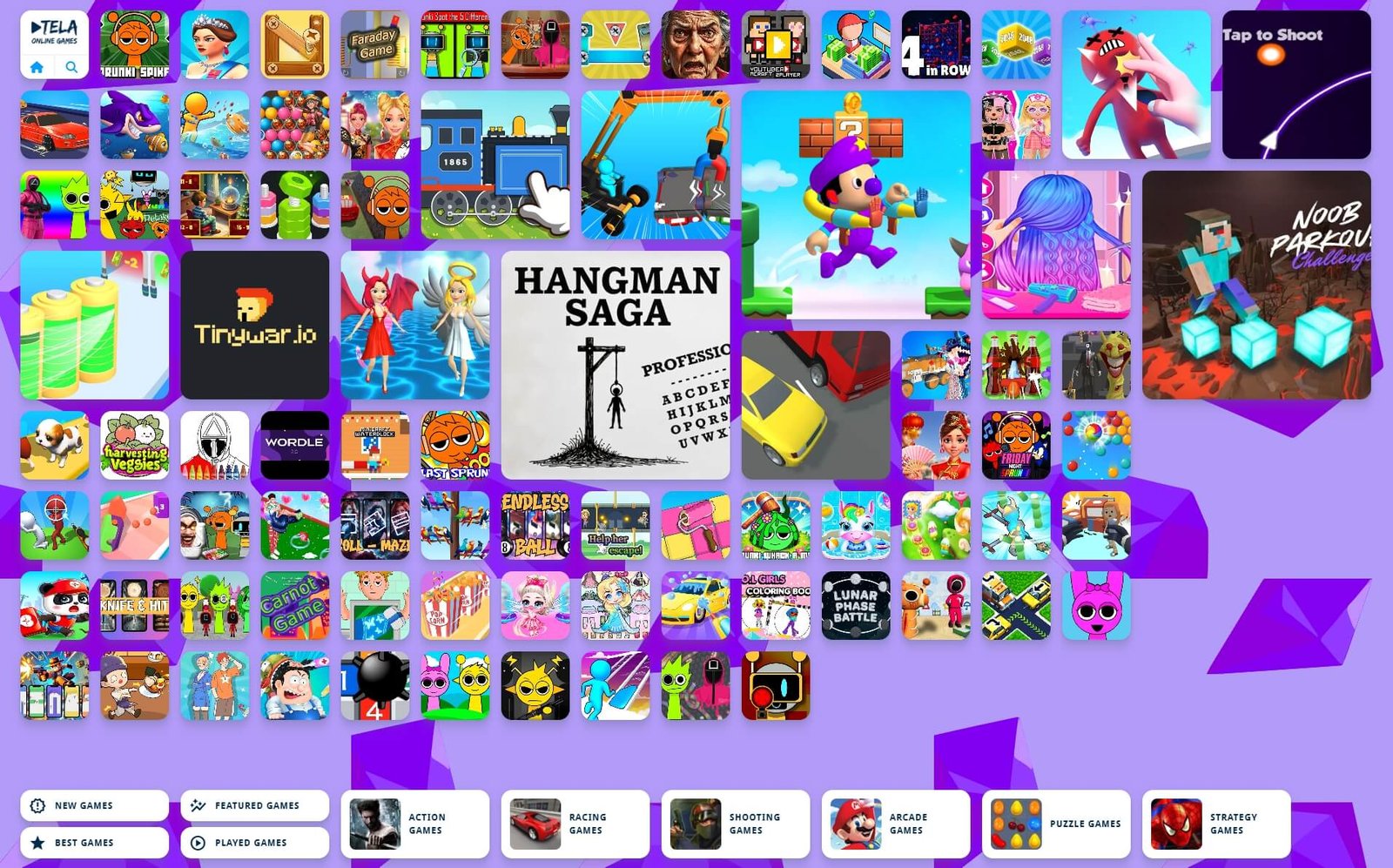
Bus School Park Driver
Popular Games
Last Played

Cloud computing is transforming HTML5 gaming by enhancing performance, scalability, and accessibility across platforms. Games can now deliver content instantly without requiring players to download updates or patches, significantly improving user experience.
Cloud infrastructure allows developers to offload complex processing tasks to remote servers, enabling more sophisticated game mechanics and larger virtual worlds while maintaining performance across various devices.
The scalability advantages are particularly notable - cloud platforms automatically adjust resources based on player demand, allocating additional server capacity during peak times or special events to prevent lag. With globally distributed data centers, players experience low latency regardless of their location.
Artificial intelligence is revolutionizing how players interact with HTML5 games through two primary applications:
Dynamic gameplay adaptation - AI-controlled characters learn from player behavior and adjust their strategies accordingly. In combat games, enemies can analyze and respond to player tactics, creating more challenging and unpredictable experiences.
Personalized gaming - AI systems track player preferences to customize difficulty levels and recommend content that matches individual play styles.
The content-generation capabilities of AI are equally impressive. Procedural generation powered by AI can automatically create game levels, missions, and environments based on player behavior. Some games use this technology to build vast worlds with diverse landscapes and creatures, while others generate branching narratives that evolve based on player decisions.
The integration of augmented and virtual reality technologies is creating more engaging HTML5 gaming experiences through:
Enhanced real-world interaction - HTML5 games can leverage AR to allow players to interact with game elements in their physical environment using smartphones or AR glasses, leading to more sophisticated experiences similar to Pokémon GO.
Browser-based VR experiences - Advancements in WebVR enable developers to create virtual reality games that run directly in web browsers without additional software. This facilitates access to entry-level VR experiences for a broader audience.
Multi-device accessibility - HTML5-based AR and VR games work across numerous devices, from smartphones to desktops, unlike traditional AR/VR games that require specialized equipment.
HTML5's ability to run seamlessly across different devices and operating systems remains one of its greatest strengths in 2025.
Cloud save functionality allows players to maintain progress across devices, creating a continuous gaming experience. This technology enables players to start a game on their desktop and continue playing on their smartphone without interruption.
The cross-platform compatibility significantly expands audience reach, with games functioning across computers, tablets, and smartphones. Popular titles now support cross-platform multiplayer, allowing friends to play together regardless of their chosen device.
Modern web technologies like WebAssembly have dramatically improved the performance of HTML5 games, making them comparable to native applications in terms of speed and responsiveness.
Social gaming continues to dominate the industry, with HTML5 developers focusing on building more interactive multiplayer experiences:
Real-time interaction - WebSocket technology enables players to compete or collaborate in real time, creating competitive gameplay similar to traditional console experiences.
Community-driven events - Developers are hosting special events like tournaments and team challenges to foster player engagement and community building.
Cross-device multiplayer - HTML5 makes it possible for friends to play together regardless of whether they're using mobile devices or desktops.
Browser capabilities have advanced significantly, allowing HTML5 games to achieve visual quality that rivals traditional gaming platforms:
WebGL 2.0 implementation enables developers to create stunning graphics with advanced lighting, shadows, and textures comparable to console games.
Level of Detail (LOD) rendering and other optimization techniques help games maintain visual quality while running smoothly across devices with varying performance capabilities.
Higher frame rates are now possible with optimized rendering engines, delivering smoother animations and more responsive gameplay.
With mobile gaming dominating the industry, HTML5 developers are prioritizing mobile-first design principles:
Touch-optimized controls are being designed specifically for smartphones and tablets, with special attention to responsiveness and natural interaction patterns.
Adaptive interfaces automatically adjust layout and UI elements to work perfectly across different screen sizes and orientations, ensuring an optimal experience whether playing on a small phone or large tablet.
Load times and performance optimization have become critical focus areas for HTML5 game developers:
Progressive loading techniques show essential game elements first while less important assets load in the background, allowing players to begin playing sooner.
Performance analytics tools help development teams measure gameplay metrics and collect user experience data, enabling them to optimize games based on real player feedback.
Improved code efficiency through better programming practices and technologies like WebAssembly, delivering faster execution and smoother gameplay across devices.
Blockchain technology is opening exciting new possibilities for HTML5 game development:
True digital ownership through NFTs allows players to genuinely own unique in-game items that can be bought, sold, or traded outside the game ecosystem.
Play-to-earn models offer new monetization approaches where players can collect tokens with real-world value while playing. These tokens can be used within games or exchanged for currency.
Decentralized marketplaces enable players to trade directly with each other without centralized control, creating more open gaming economies.
Social aspects of gaming continue gaining importance in HTML5 development:
Social media integration makes it easy to share achievements and gameplay moments, helping build active communities and attracting new players through social connections.
Co-viewing features allow players to enjoy content together, whether playing collaboratively or watching livestreams within the game.
Regular in-game events like tournaments and team challenges maintain player engagement and provide reasons to return regularly.
As we progress through 2025, HTML5 game development continues evolving through technological advancement and changing player expectations. Cloud computing, AI integration, AR/VR experiences, cross-platform compatibility, and enhanced graphics are collectively redefining what's possible in browser-based gaming.
These innovations, combined with improved performance, mobile-first design, blockchain integration, and community-focused features, are helping developers create increasingly immersive and accessible experiences that connect with players across devices and platforms. The future of HTML5 gaming looks brighter than ever, with the gap between browser games and native applications narrowing significantly.